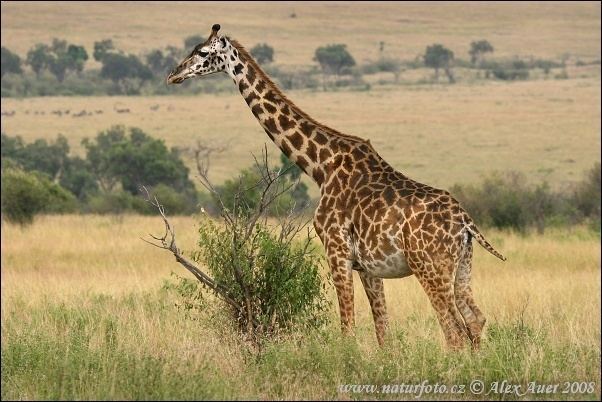Rank Subspecies | Phylum Chordata Order Artiodactyla Genus Giraffa | |
 | ||
Scientific name Giraffa camelopardalis tippelskirchi Similar Reticulated giraffe, Rothschild's giraffe, Grant's gazelle, Giraffidae, West African giraffe | ||
Masai giraffe
The Masai giraffe (Giraffa tippelskirchi), also spelled Maasai giraffe, also called Kilimanjaro giraffe, is the largest species of giraffe and the tallest land mammal. It is found in Kenya, Tanzania, and Zambia. Once considered a subspecies of the conglomerate Giraffa camelopardalis species, in 2007 and 2016 studies identified the Masai giraffe as a separate species of a reorganised Giraffa genus. The Rhodesian giraffe (formerly G. c. thornicrofti) was once considered a separate subspecies, but after genetic analysis it has been subsumed as an ecotype into the Masai giraffe species. Overall, the approximate number of all populations accumulate to 32,550 in the wild, with 550 being of the Rhodesian phenotype.
Contents

Masai giraffe miles born at the houston zoo jan 30 09
Description

The Masai giraffe is distinguished by jagged spots on its body, geographic range including southern Kenya, all of Tanzania, and the Luangwa Valley in Zambia, and genetic evidence. It is the largest-bodied giraffe species.
Conservation
All giraffes are considered Vulnerable to extinction by the IUCN, and the Masai giraffe population declined 52% in recent decades. Demographic studies of wild giraffes living inside and outside protected areas suggest low adult survival outside protected areas due to poaching, and low calf survival inside protected areas due to predation are the primary influences on population growth rates. Survival of giraffe calves is influenced by the local presence or absence of long-distance migratory herds of wildebeest and zebra. In situ conservation of Masai giraffes is being done by several government agencies including Kenya Wildlife Service, Tanzania National Parks, Zambia Wildlife Authority; and non-governmental organizations including PAMS Foundation, Wild Nature Institute, and Giraffe Conservation Foundation. At the several zoos, Masai giraffe have become pregnant and successfully given birth.
